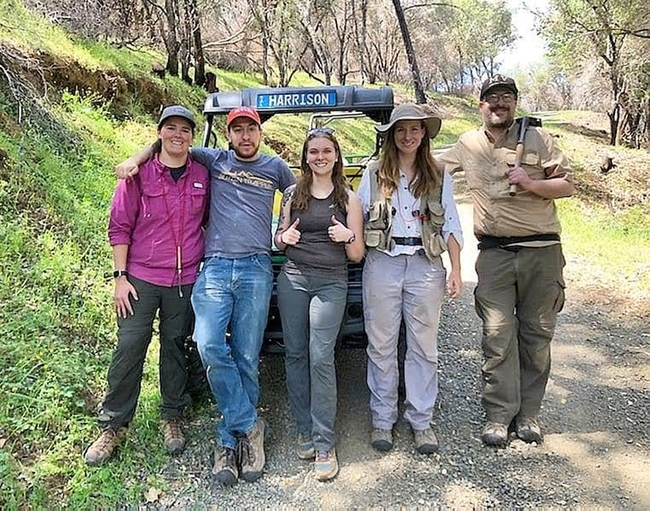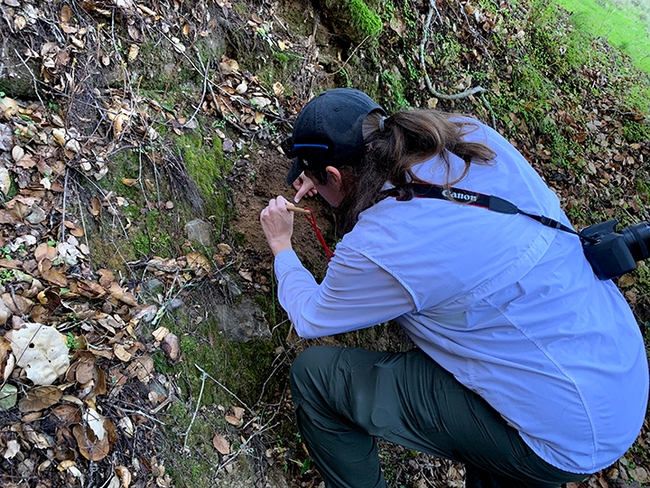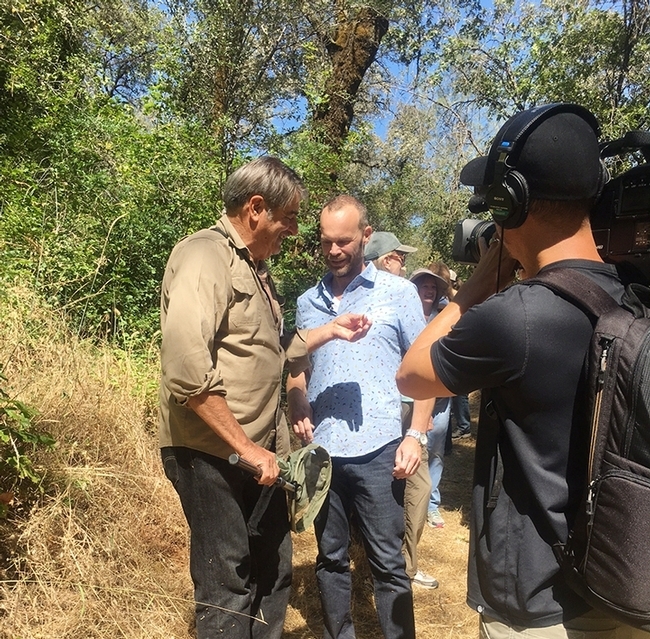- Author: Kathy Keatley Garvey

Or "B" is for Biodiversity Museum Day.
You, no doubt, saw the stick insects, Madagascar hissing cockroaches and millipedes. And you may have handled them. Scores of children--and many adults--asked to touch or hold them.
The Bohart Museum, directed by Lynn Kimsey, UC Davis distinguished professor of entomology, shared a booth at the Conference Center with the laboratory of Jason Bond, who is the Evert and Marion Schlinger Endowed Chair in Insect Systematics, UC Davis Department of Entomology and Nematology, and associate dean, College of Agricultural and Environmental Sciences. Arthropods from the Bond lab also included a scorpion and a trapdoor spider. The Bohart displayed a number of specimens, including the state insect, the California dogface butterfly, and the Asian giant hornet (nicknamed "murder hornet" by the news media.)
Some 1300 visitors checked out the displays, staffed by scientists from 11 museums or collections on campus:
- Arboretum and Public Garden
- UC Davis Bee Haven
- Bohart Museum of Entomology
- Botanical Conservatory
- California Raptor Center
- Center for Plant Diversity
- Department of Anthropology Museum
- Museum of Wildlife and Fish Biology
- Nematode Collection
- Paleontology Collection
- Phaff Yeast Culture Collection
This was the first year the free, science-based event has been held exposition-style in one facility. A special feature: side trips to several of the museums or collections.
Senior museum scientist Steve Heydon periodically escorted tours from the Conference Center to the Bohart Museum located in Room 1124 of the Academic Surge Building. Currently closed to the public due to COVID-19 pandemic precautions, the Bohart houses a global collection of eight million insect specimens, plus a live "petting zoo" (Madagascar hissing cockroaches, stick insects and tarantulas) and an insect-themed gift shop (now online).
(Editor's Note: More coverage pending)
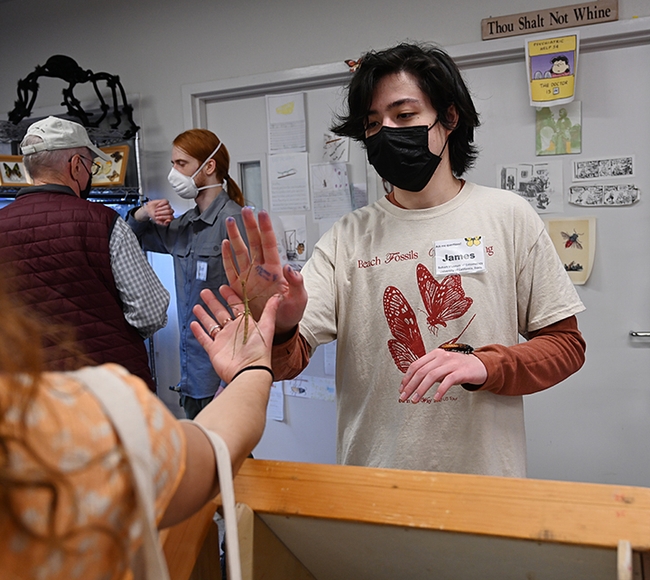
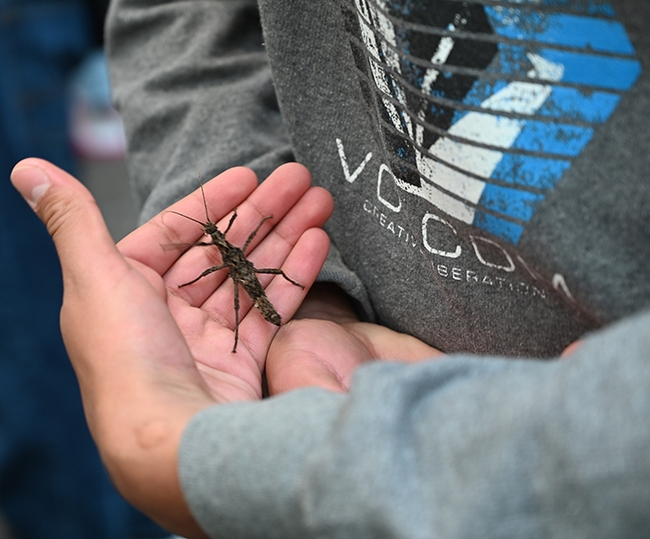
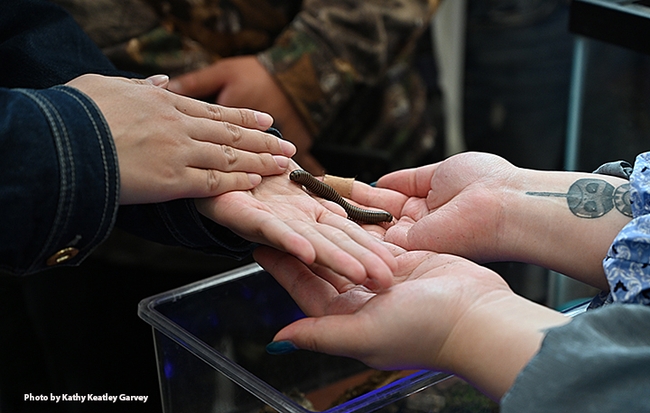
- Author: Kathy Keatley Garvey
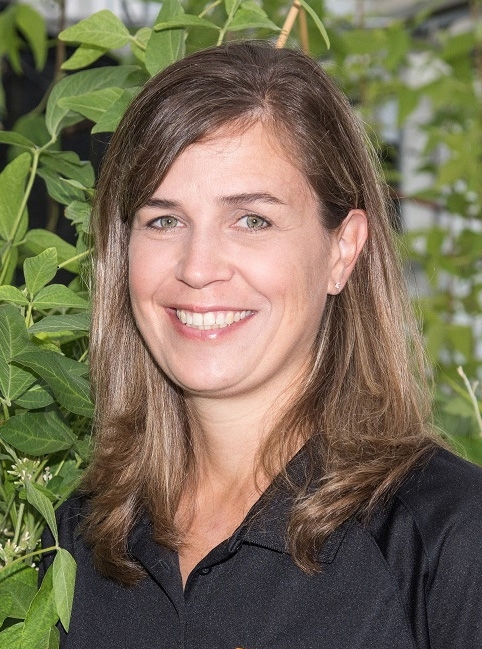
Well, how about nematodes? They can do "tricks," too.
Professor and plant pathology researcher Melissa Mitchum of the Department of Pathology, University of Georgia, willpresent the next UC Davis Department of Entomology and Nematology seminar.on "The Tricks Phytonematodes Use to Modulate Plant Development."
Her virtual seminar begins at 4:10 p.m., Pacific Time, on Wednesday, March 9, announced seminar coordinator and nematologist Shahid Siddique, assstant professor, UC Davis Department of Entomology and Nematology.
"Phytonematodes secrete a suite of effectors to modulate developmental programs of their hosts to cause disease," Mitchum says in her abstract. 'In this talk, I will highlight what we are learning about these effectors and the tricks they use to accomplish their goals."
Along with colleague Lisa Beamer of the University of Missouri, Mitchum is co-directing a four-year $1.2 million grant from the joint National Science Foundation and the U.S. Department of Agriculture National Institute of Food and Agriculture Plant-Biotic Interactions Program "to help combat a devastating soybean pathogen," according to a January 2022 news article in the Johnson City Press, Tenn. "The soybean cyst nematode, a microscopic roundworm, is responsible for annual crop losses of $1 billion in the U.S. alone," the news story relates.
Mitchum's research focuses "on molecular plant-nematode interactions with an emphasis on the sedentary endoparasitic cyst and root-knot nematodes," Mitchum says on her website. "Pathosystems include cyst (Heterodera glycines) nematode on soybean, cyst (Vittitadera zeaphila) nematode on corn, and root-knot (Meloidogyne spp.) nematodes on soybean, cotton, and peanut. We utilize the model plant Arabidopsis to accelerate our studies to dissect the molecular basis of parasitism by cyst (Heterodera schachtii) and root-knot nematodes. Our work addresses plant responses during compatible and incompatible plant-nematode interactions, the identification and functional analysis of nematode stylet-secreted effector proteins, and developmental reprogramming of host root cells via peptide mimicry and phytohormone manipulation. I work closely with plant breeders to develop high yielding, nematode resistant varieties. Current efforts are also focused on translating basic discoveries to develop novel approaches for nematode resistance in crop plant."
Mitchum received her bachelor's degree in biology in 1993 from the University of Puget Sound, Tacoma, Wash., and her master's degree in plant pathology from the University of Nebraska, Lincoln, in 1995. She obtained her doctorate in plant pathology, with a minor in biotechnology, from North Carolina State University, Raleigh, in 2001. Mitchum served as a postdoctoral fellow with the Developmental, Cell and Molecular Biology Group at Duke University in 2003.
For any seminar technical issues, Siddique may be reached at ssiddique@ucdavis.edu.
Want to learn the basics of nematodes, aka roundworms? Be sure to watch nematologist Steve Nadler, professor and chair of the UC Davis Department of Entomology and Nematology in this YouTube video. He delivered this presentation virtually at the 2021 UC Davis Biodiversity Museum Day. He discusses what they are and why they're important to the ecosystem.
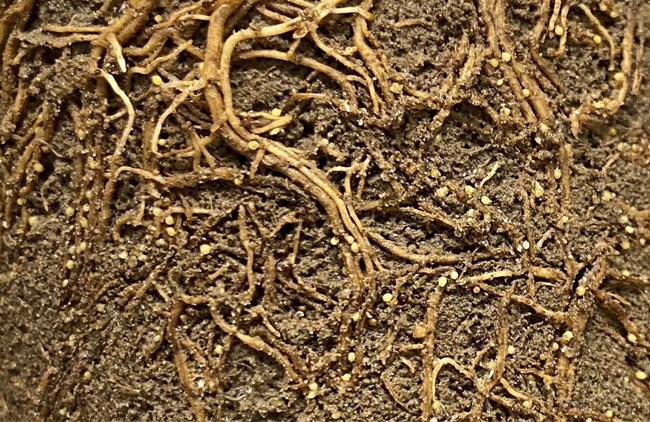
- Author: Kathy Keatley Garvey
BioDivDay is Sunday. March 6 at the UC Davis Conference Center: Can't wait to see you!
That's the message the organizers of the 11th annual UC Davis Biodiversity Museum Day are spreading throughout social media.
The UC Davis Biodiversity Museum Day is a free, science-based event that takes place from 11 a..m. to 3 pm. in the UC Davis Conference Center, 550 Alumni Lane. Admission and parking are free, but visitors must adhere to the COVID-19 Campus Ready guidelines. Masks will be required in accordance with campus policies. This year's event is especially geared for undergraduates and other members of the UC Davis community.
Visitors to the Conference Center will see displays from 11 museums or collections on campus in one large exposition in the ballrooms, and be able to ask questions of the scientists from the:
- Arboretum and Public Garden
- UC Davis Bee Haven
- Bohart Museum of Entomology
- Botanical Conservatory
- California Raptor Center
- Center for Plant Diversity
- Department of Anthropology Museum
- Museum of Wildlife and Fish Biology
- Nematode Collection
- Paleontology Collection
- Phaff Yeast Culture Collection
Admission and parking are free, but visitors must adhere to the COVID-19 Campus Ready guidelines. Masks will be required in accordance with campus policies, organizers said. Visitors can also sign up at the Conference Center for limited tours. Several collections or museums are offering side trips, with registration to take place at the Conference Center.
Latest updates today:
Bohart Museum of Entomology. At the Bohart Museum booth in the Conference Center, UC Davis alumnus and Bohart scientist Fran Keller, a professor at Folsom Lake College, will join Bohart associate Greg Kareofelas in discussing the state insect, the California dogface butterfly, Zerene eurydice, and its host plant, California false indigo, Amorpha californica. This is the 50th anniversary of the year that the California Legislature named the butterfly the state insect. Keller authored the children's book, The Story of the Dogface Butterfly, with photos by Kareofelas and Keller and illustrations by former UC Davis student Laine Bauer. Keller and Kareofelas collaborated on a California dogface butterfly poster that's for sale in the gift shop.
Lynn Kimsey, director of the Bohart Museum and a UC Davis distinguished professor of entomology, will discuss the Asian giant hornet. Vespa mandarinia (nicknamed "the murder hornet" by the news media), and will show specimens of the hornet, other species of Vespa, and Vespa nests.
Nematode Collection. The nematode collection will feature mostly root-knot nematodes and Ascaris (roundworm) nematodes, according to coordinator and nematologist Shahid Siddique, assistant professor, and doctoral student Alison Coomer. The display will include:
- What's in the jar?
- Celery infected with root-knot nematodes
- Tree swallow infected with Diplotriaena
- White-tailed deer eye infected with a Thelazia species
- Peach root infected with root-knot nematodes
- Mormon crickets infected with Gordius robustus
- Lettuce infected with root-knot nematodes
- Garlic damaged by Ditylenchus dipsaci
- Horse stomach infected with three parasites: Parascaris (roundworms), tapeworms, and botfly larvae.
- Grape roots infected with root-knot nematodes
- Sweet potato infected with root-knot nematodes
- Sugar beet infected with cyst nematodes
- Peach root infected with cyst nematodes
- Sugar beet infected with root-knot nematodes
- Ascaris lumbricoides (roundworm)
- Minke whale infected infected with ascaridoid nematodes
- Heartworm of dog
Nematologist Steve Nadler, professor and chair of the UC Davis Department of Entomology and Nematology, explains what a nematode is on this YouTube video presented at the 2021 UC Davis Biodiversity Museum Day.
So, let's see--bees, birds, bugs, plants, raptors, fossils, nematodes (aka round worms), and yeast cultures. Bring your camera, your questions to the scientists, your smile, your COVID-19 pandemic approvals and wear that mask.
And as they say: "Can't wait to see you!"
The UC Davis Biodiversity Museum Day is traditionally held on the Saturday of Presidents' Day weekend. However, last year's event was virtual, and this year's event is centrally located in an exposition. For more information, access the UC Davis Biodiversity Museum Day website and/or connect with Instagram,Twitter, and Facebook.
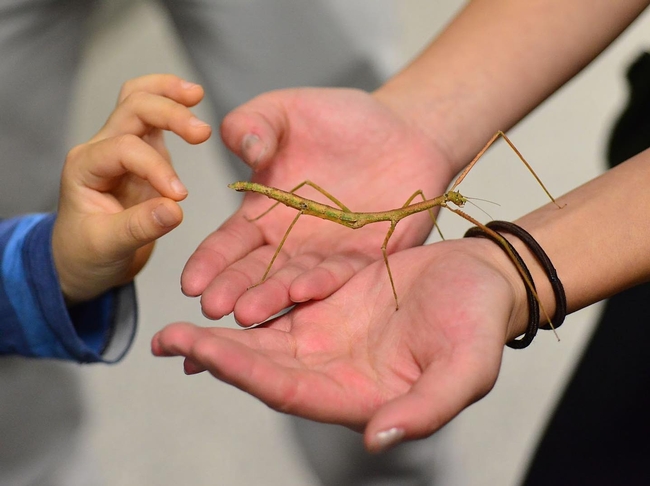
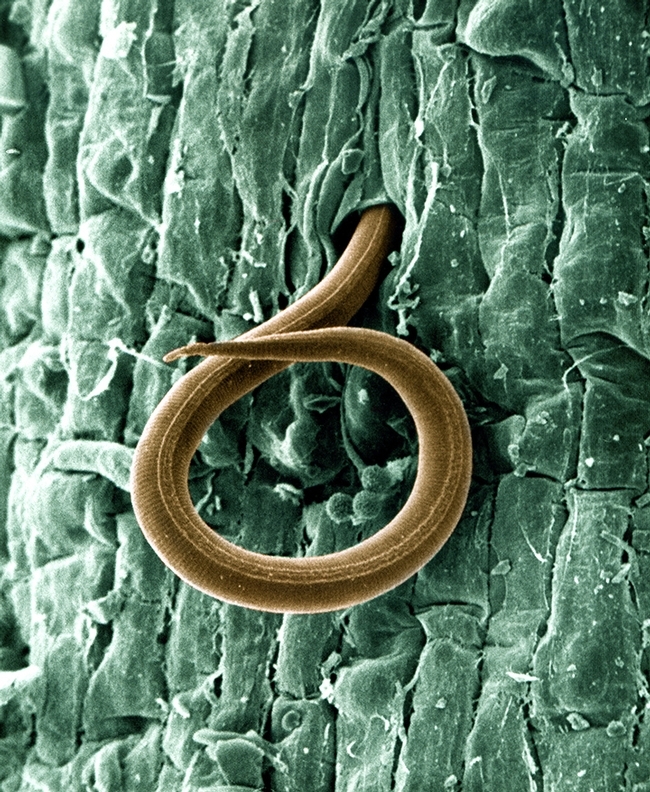
- Author: Kathy Keatley Garvey
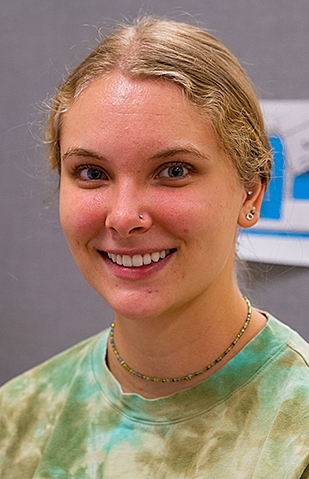
Annie is a pet scorpion belonging to Emma Jochim, a second-year doctoral student n the Jason Bond lab, UC Davis Department of Entomology and Nematology.
"She's an Anuroctonus pococki so I call her 'Annie' for short!" said Jochim. "The common name is 'Californian swollen stinger scorpion' because they have an extra 'bulb' on their telson that most scorpions don't, so I think that's pretty neat about this species. I haven't tried to handle her because she seems pretty aggressive--stinging crickets/roaches as soon as I put them in front of her and attacking water when I pour some in her enclosure."
Jochim's labmate, Xavier Zahnle, found the scorpion while he was collecting millipedes "and brought her back to me so I'm not sure how old she is but I've had her for a year and a half."
Emma holds a bachelor's degree in biology, with a minor in geology and chemistry, from Millsaps College, Jackson, Miss., where she graduated summa cum laude. Her honors thesis: "Species Delimitation of Vaejovis Scorpions from the Santa Catalina Mountains Using Genetic, Morphological, and Geographical Data." While a student at Millsaps College, her outreach activities including sharing her knowledge of tarantulas, scorpions and vinegaroons at the Mississippi Museum of Natural Science.
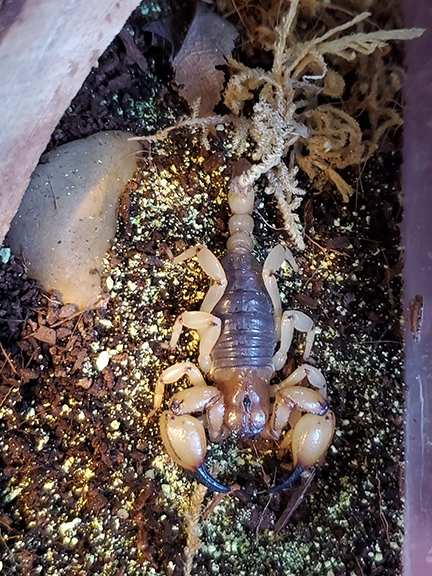
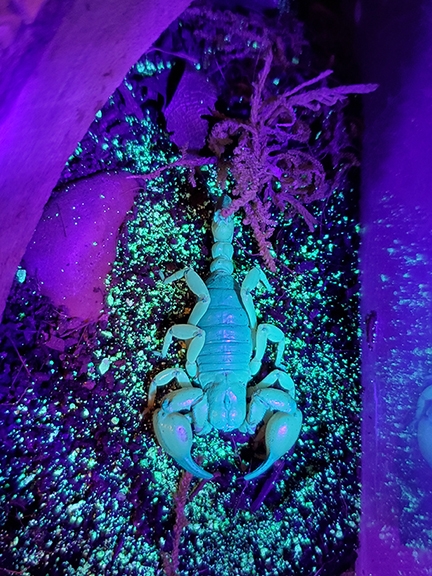
"Annie" will be just one of the live animals displayed in the Bohart Museum of Entomology/Jason Bond booth in the Conference Center. The Bond section also will include a live trapdoor spider (genus Hebestatis), a tarantula and millipedes, as well as specimens.
Doctoral candidate Lacie Newton of the Bond lab is coordinating the arachnid/myriapod section. Jason Bond, her major professor, is the Evert and Marion Schlinger Endowed Chair in Insect Systematics, UC Davis Department of Entomology and Nematology, and associate dean, College of Agricultural and Environmental Sciences.
"And there will be a small interactive station where people will be able to use props that mimic an insect flying into a web and learn more about the sensory structures that spiders have to detect those vibrations," Newton said.
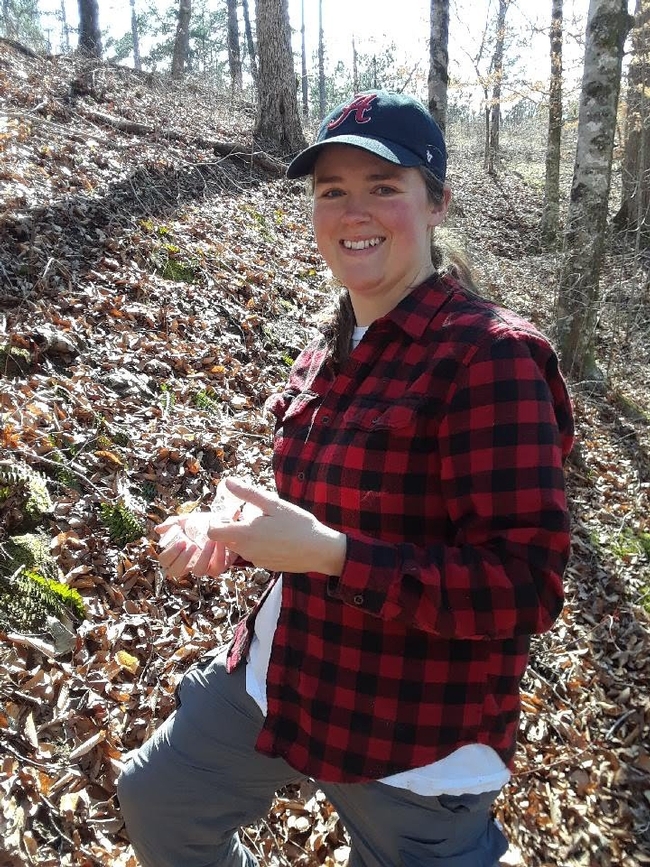
Eleven Museums, Collections. Scientists from a total of 11 museums or collections will staff booths in the Conference Center. Represented will be the Arboretum and Public Garden, UC Davis Bee Haven, Bohart Museum of Entomology, Botanical Conservatory, California Raptor Center, Center for Plant Diversity, Department of Anthropology Museum, Museum of Wildlife and Fish Biology, Nematode Collection, Paleontology Collection, and the Phaff Yeast Culture Collection. Visitors can sign up at the Conference Center for tours of several of the museums or collections. (See news story)
The UC Davis Biodiversity Museum Day is traditionally held on the Saturday of Presidents' Day weekend. However, last year's event was virtual, and this year's event is centrally located in an exposition. For more information, access the UC Davis Biodiversity Museum Day website and/or connect with Instagram,Twitter, and Facebook.
Bohart Fact Sheets on Scorpions. Lynn Kimsey, director of the Bohart Museum and UC Davis distinguished professor of entomology, has published two Fact Sheets about scorpions on the Bohart website.
Scorpions are arachnids, Kimsey writes, "and like all arachnids, they have eight legs, although it looks like ten, and a body divided into two regions, the cephalothorax (the head plus thorax) and the abdomen...The scorpion exoskeleton is different from that of similar groups. Something about it causes scorpions to fluoresce bright blue to green under ultraviolet light. So in the desert its easy to find them at night with a black light."
Kimsey describes scorpions as "nocturnal predators. During the day they hide under stones, logs or boards, or in cracks and holes in the ground. They prey on ground-dwelling insects and other small animals. Scorpions will occasionally wander into homes, particularly in new housing developments. New housing developments often encroach upon the scorpions' normal habitat and as a result these animals will blunder into homes searching for prey and shelter. Within several years, scorpions will no longer live in these areas because of the lack of suitable habitat and prey."
"The majority of California scorpion species average about 2 inches long as adults, however, some exotic species can be as long as 6 inches. Scorpions occur throughout the milder parts of California, including the Sierra foothills and the coastal mountains. Most of the species of scorpions in California pose no more threat to humans than do ordinary bees and wasps."
How long do they live? "Adult scorpions generally live two to three years," Kimsey relates. "They do not begin producing young until they are nearly a year old. Females produce between 20 and 30 live young at a time. Young scorpions are carried on the female's back for the first 5-15 days of life."
Read the two scorpion posts on the Bohart Museum website: one on scorpions in general and the other on sun scorpions. Sun scorpions, or solfugids, are distantly related to both scorpions and spiders.
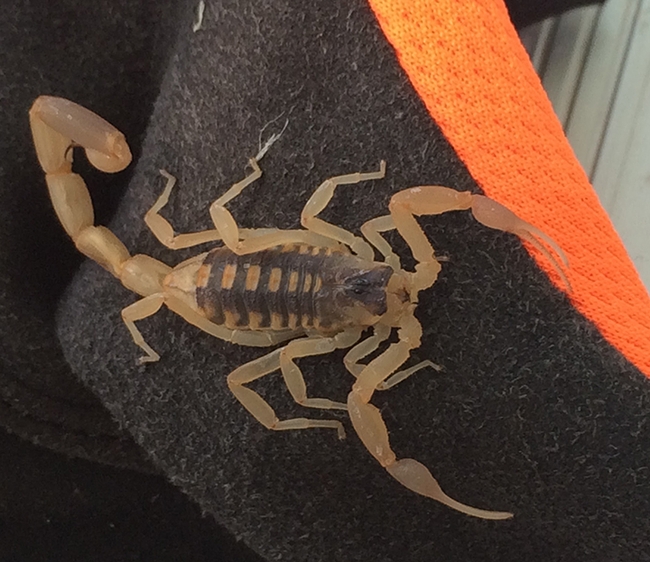
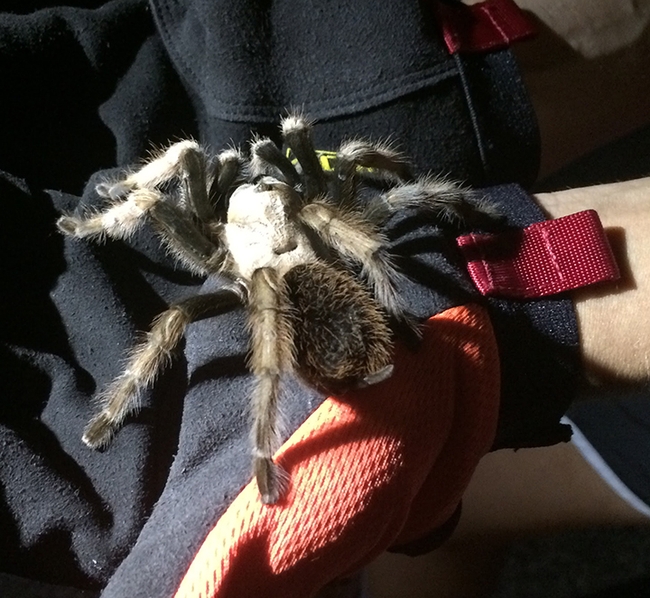
- Author: Kathy Keatley Garvey
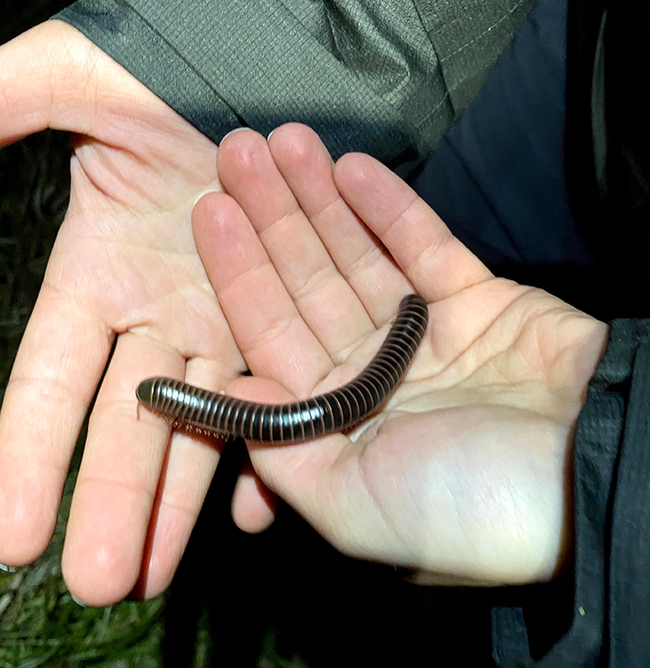
The science-based event, free and open to the public, is set for 11 a.m. to 3 p.m., Sunday, March 6 in the UC Davis Conference Center, 555 Alumni Lane.
This year the Biodiversity Museum Day is geared toward the UC Davis community, particularly undergraduates, said Biodiversity Museum Day co-organizer Tabatha Yang, education and public outreach coordinator for the Bohart Museum of Entomology. Admission and parking are free, but visitors must adhere to the COVID-19 Campus Ready guidelines. Masks will be required in accordance with campus policies. (See news story)
Sharing the Bohart Museum booth in the Conference Center will be the Jason Bond laboratory. Bond is the Evert and Marion Schlinger Endowed Chair in Insect Systematics, UC Davis Department of Entomology and Nematology, and associate dean, College of Agricultural and Environmental Sciences.
"The arachnid/myriapod section of Biodiversity Museum Day will consist of some live specimens--a tarantula, trapdoor spider, scorpion, and some millipedes, and ethanol preserved specimens of arachnids/myriapods that are pretty common and/or well-known, and a small interactive station where people will be able to use props that mimic an insect flying into a web and learn more about the sensory structures that spiders have to detect those vibration," said doctoral candidate Lacie Newton of the Bond lab, coordinator of the exhibit.
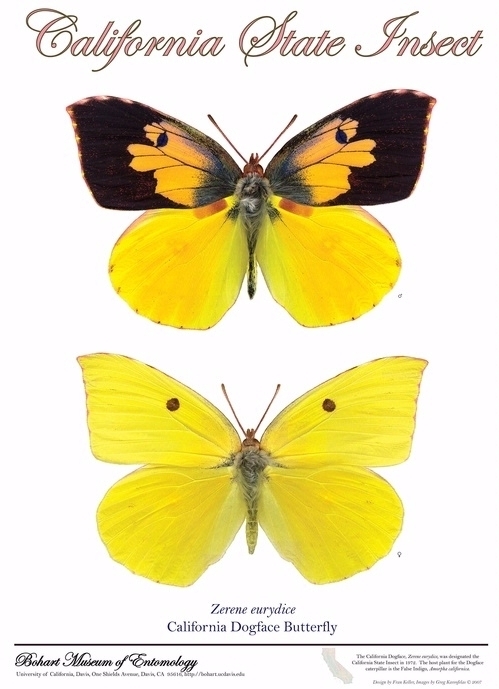
Visitors to the Conference Center will see displays from 11 museums or collections on campus:
- Arboretum and Public Garden
- UC Davis Bee Haven
- Bohart Museum of Entomology
- Botanical Conservatory
- California Raptor Center
- Center for Plant Diversity
- Department of Anthropology Museum
- Museum of Wildlife and Fish Biology
- Nematode Collection
- Paleontology Collection
- Phaff Yeast Culture Collection
Visitors can sign up at the Conference Center for special tours:
- The Bohart Museum of Entomology, located in Room 1124 of the Academic Surge Building, Crocker Lane, has scheduled tours at noon, 1 and 2. The Bohart houses a global collection of eight million insect specimens, and also a live "petting zoo" and gift shop. "People will sign up at the Convention Center and be chaperoned over approximately 15 minutes before the hour to the attend their tour," said Tabatha Yang, education and outreach coordinator. "Tours should last 30 to 45 minutes." Entomologist Jeff Smith, curator of the Lepidoptera collection, will be discussing butterflies and moths.
- The UC Davis Bee Haven, located on Bee Biology Road, next to the Harry H.Laidlaw Jr. Honey Bee Research Facility, west of the central campus, will offer tours at noon and 2. Established in the fall of 2009, the Bee Haven is a half-acre demonstration garden operated by the Department of Entomology and Nematology. "We'll focus on how best to observe and identify bees in the garden, as well as suggested bee plants that grow well in our area with low water," said Christine Casey, academic program management officer of the Bee Haven.
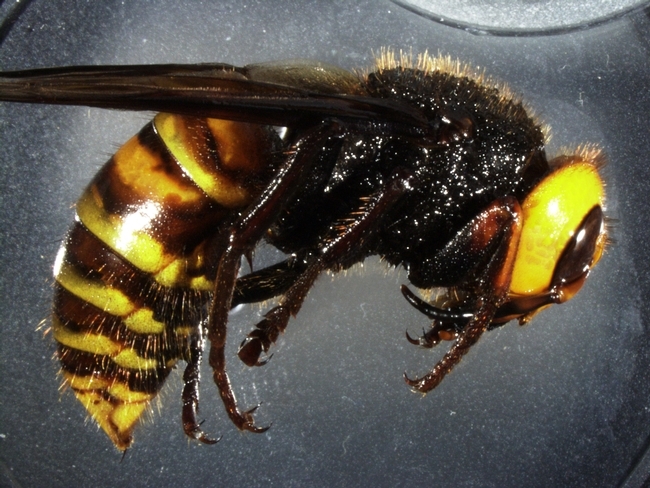 An Asian giant hornet from Blaine, Wash. This insect, nicknamed "murder hornet," will be discussed at the UC Davis Biodiversity Museum Day. (Photo by Allan Smith-Pardo, USDA)
An Asian giant hornet from Blaine, Wash. This insect, nicknamed "murder hornet," will be discussed at the UC Davis Biodiversity Museum Day. (Photo by Allan Smith-Pardo, USDA) - The Arboretum and Public Garden will provide two 30-45 minute tours, "Climate-Ready Tree Project: Texas Tree Trials." Groups will leave the Conference Center at 11:30 a.m. and 1:30 p.m. The project mission is to see if trees from west and central Texas will do well in this climate. The project involved collecting seeds, propagating them and planting them in the Arboretum.
- The Phaff Yeast Culture Collection is planning self-guided tours of the UC Davis Brewery, used for teaching and research, according to Kyria Boundy-Mills, curator, Phaff Yeast Culture Collection, Food Science and Technology.
Different yeast strains are used for different styles of beer. These include ale yeast strains, lager yeast strains, and Belgian beer strains that are hybrids of wild yeasts. UC Davis offers an undergraduate major in food science and technology, with an emphasis on brewing science. Training includes chemistry, biochemistry, microbiology, quality assurance, engineering, sanitation, packaging, malting and crewing. The program currently includes 18 students studying for their bachelor of science degrees, and three students seeking their master of science degrees. - The Botanical Conservatory is technically not offering tours, says manager Ernesto Sandoval "but we will be open to the public so people can wander through at their own pace and we'll regulate the number of people in the greenhouse at any one time. They can see our revamped succulent and carnivore rooms as well as our Cacao, aka 'Chocolate Tree,' with fruits as well as coffee and a very happy vanilla plant all amongst an incredible diversity of plants from ferns to an assortment of orchids."
The UC Davis Biodiversity Museum Day is traditionally held on the Saturday of Presidents' Day weekend. However, last year's event was virtual, and this year's event is centrally located. For more information, access the UC Davis Biodiversity Museum Day website and/or connect with Instagram,Twitter, and Facebook.
Another upcoming event is the 108th annual UC Davis Picnic Day, a campuswide open house scheduled April 23.
